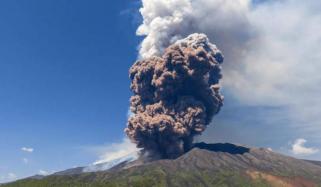
Mount Everest, the highest peak on Earth, continues to face a significant environmental issue due to accumulated garbage.
As per multiple outlets, a recent cleanup mission funded by the Nepal government and led by a team of Sherpas has underscored the magnitude of the problem.
This year's cleanup effort, involving both soldiers and Sherpas, successfully removed 11 tons of garbage, four dead bodies, and a skeleton from the mountain.
Despite these efforts, Ang Babu Sherpa, the team leader, estimates that 40-50 tons of trash still remain at South Col, the final camp before the summit.
Ang Babu explained, "The remaining garbage consists mainly of old tents, food packaging, gas cartridges, oxygen bottles, and climbing ropes."
Since Sir Edmund Hillary and Tenzing Norgay first scaled Everest in 1953, climbers have often left behind waste.
Although recent regulations requiring climbers to return with their trash have reduced the amount of new litter, remnants from older expeditions remain problematic.
"Most of the garbage dates back to earlier climbs," Ang Babu noted.
However, the cleanup operation encountered many obstacles, including harsh weather conditions and thin air at high altitudes.
Sherpas tackled the higher elevations while soldiers focused on lower levels and the base camp.
The spring climbing season, with relatively favourable weather, provided the best opportunity for the cleanup.
Working at South Col, where oxygen levels are about one-third of normal and weather conditions can quickly worsen, was particularly difficult.
Ang Babu further elaborated, "We had to wait for the sun to melt the ice cover, but staying at that altitude for long is not feasible."
One of the most challenging tasks was extracting a body frozen in a standing position, which took two days due to adverse weather conditions.
Another body, located at 8,400 meters, took 18 hours to bring down to Camp 2, where it was then airlifted to Kathmandu for identification.
Meanwhile, out of the 11 tons of trash collected, three tons of biodegradable waste were taken to nearby villages.
The remaining eight tons were carried by porters and yaks, and then by trucks to Kathmandu, where it was sorted for recycling by Agni Ventures.
"The oldest waste we received was from 1957, including rechargeable batteries for torch lights," said Sushil Khadga of Agni Ventures.















